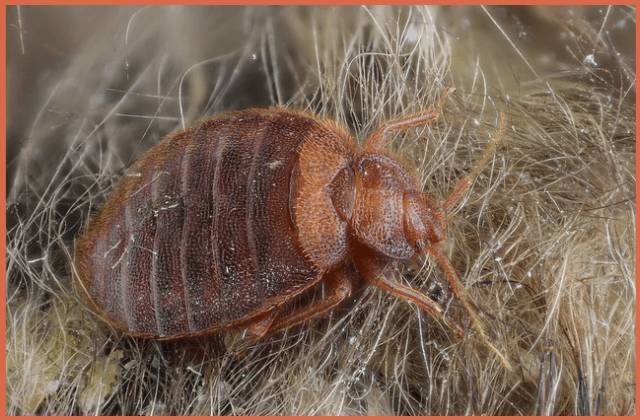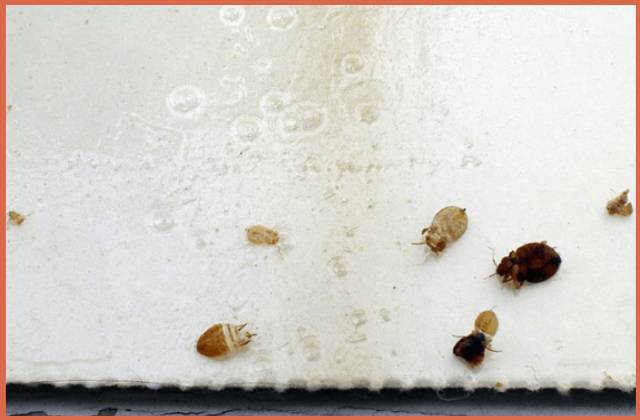How to Check Your Bed for Bed Bugs
Discovering bed bugs in your bed can be alarming, but early detection is key to preventing a full-blown infestation. Knowing how to check your bed for bed bugs effectively can help you take swift action and maintain a safe, comfortable sleeping environment. In this article, we will talk about how to check your bed for bed bugs, including ten crucial steps to thoroughly inspect your bed for these unwelcome pests.
How to Check Your Bed for Bed Bugs
1. Gather Your Inspection Tools:
Gathering your inspection tools is a crucial first step in effectively checking for bed bugs. Essential items include a powerful flashlight, which illuminates hidden and dark areas where bed bugs often reside, and a magnifying glass to help you spot the tiny insects and their eggs more easily. Disposable gloves protect your hands and prevent the spread of bed bugs while handling infested items.
Additionally, having plastic bags on hand allows you to seal and isolate any infested bedding or items for washing or disposal. By preparing these tools beforehand, you ensure a thorough and efficient inspection process, increasing the likelihood of early detection and successful eradication of bed bugs.
2. Strip the Bed:
Stripping the bed is a fundamental step in checking for bed bugs, as it exposes areas where these pests commonly hide. Start by removing all bedding, including sheets, pillowcases, mattress covers, and any other linens. Place these items in sealed plastic bags to prevent any potential bed bugs from spreading until you can wash them at a high temperature.
Stripping the bed not only allows you to closely inspect the mattress and box springs but also helps contain any bed bugs that may be present in the bedding. This thorough approach is essential for identifying and addressing infestations early on.
3. Inspect the Mattress Seams:
Inspecting the mattress seams is a critical step in detecting bed bugs, as these pests often hide in the small crevices along the edges of mattresses. Carefully examine the seams, folds, and tufts of the mattress using a flashlight to look for signs of bed bugs, such as live insects, tiny white eggs, shed skins, and small dark fecal spots. Pay particular attention to the stitching and any labels or tags where bed bugs might conceal themselves.
This detailed inspection helps ensure that no hiding place is overlooked, allowing for early detection and effective treatment of any bed bug infestations.
4. Check the Mattress Labels:

Checking the mattress labels is an important part of inspecting for bed bugs, as these small, tight areas provide ideal hiding spots for the pests. Examine the labels and tags thoroughly, lifting and inspecting around them with a flashlight to spot any signs of bed bugs, such as live insects, tiny eggs, or dark fecal spots. Bed bugs can easily conceal themselves in the folds and creases of labels, making it crucial to check these areas carefully.
By thoroughly inspecting the mattress labels, you can catch early signs of an infestation and take prompt action to eliminate the bed bugs.
5. Examine the Bed Frame:
Examining the bed frame is a vital step in detecting bed bugs, as these pests often hide in the cracks, joints, and crevices of the frame. Use a flashlight to carefully inspect all parts of the bed frame, including the headboard, footboard, and side rails. Pay special attention to screw holes, seams, and any other small spaces where bed bugs could conceal themselves. This thorough inspection helps identify signs of bed bugs, such as live insects, shed skins, or fecal spots, allowing for early detection and effective treatment to prevent the infestation from spreading.
6. Inspect Under the Mattress:
Inspecting under the mattress is crucial for uncovering bed bugs, as these pests often hide in the less visible areas. Lift the mattress and carefully check the underside, focusing on corners, seams, and any fabric folds. Use a flashlight to look for live bed bugs, tiny white eggs, dark fecal spots, and shed skins. This area is a common hiding spot for bed bugs, and a thorough inspection can help detect early signs of an infestation, enabling prompt action to eliminate the pests and maintain a clean, safe sleeping environment.
7. Look at Box Springs:
Looking at the box springs is an essential step in detecting bed bugs, as these insects often hide in the crevices and fabric folds of the box spring. Carefully examine the seams, edges, and corners of the box spring with a flashlight, paying close attention to any cracks in the wooden frame and the fabric cover. Check for signs of bed bugs, such as live insects, tiny white eggs, dark fecal spots, and shed skins.
Since bed bugs can easily nest in these areas, a thorough inspection of the box springs helps ensure early detection and effective control of an infestation.
8. Check Surrounding Furniture:
Checking surrounding furniture is crucial in a thorough bed bug inspection, as these pests can easily spread from the bed to nearby items. Carefully examine nightstands, dressers, chairs, and any other furniture close to the bed. Use a flashlight to inspect drawers, joints, and the undersides of furniture for signs of bed bugs, such as live insects, tiny white eggs, dark fecal spots, and shed skins. Bed bugs often hide in cracks and crevices of furniture, making a meticulous inspection necessary to detect and address infestations early, ensuring a pest-free environment.
9. Inspect Baseboards and Carpet Edges:
Inspecting baseboards and carpet edges is a critical step in detecting bed bugs, as these pests often hide in cracks and crevices along these areas. Use a flashlight to carefully examine the baseboards and edges of carpets, paying close attention to any gaps or seams where bed bugs may hide. Look for signs of bed bugs, such as live insects, fecal spots, eggs, or shed skins.
Since baseboards and carpet edges provide ideal hiding spots for bed bugs, a thorough inspection of these areas helps ensure early detection and effective control of an infestation, maintaining a pest-free environment in your home or hotel.
10. Use Bed Bug Interceptors:
Utilizing bed bug interceptors is a proactive measure in detecting and preventing bed bug infestations in your home or hotel. These specialized devices are placed under the legs of your bed, creating a barrier that traps bed bugs attempting to climb up into the bed. By capturing these pests, interceptors serve as both a detection tool and a preventive measure, allowing you to monitor for bed bug activity and prevent them from reaching you while you sleep.
Regularly checking the interceptors for trapped bed bugs and their signs, such as fecal spots or shed skins, enables early detection and prompt intervention, helping to maintain a bed bug-free environment and ensure a restful night’s sleep.
How To Check For Bed Bugs With Flashlight
Using a flashlight is an effective method for detecting bed bugs, as it helps illuminate the small and often hidden areas where these pests tend to hide. Knowing how to properly use a flashlight during your inspection can increase your chances of spotting bed bugs early on. Here are three key points to keep in mind when checking for bed bugs with a flashlight.
1. Examine Seams and Crevices:

Bed bugs commonly hide in seams, crevices, and folds of mattresses, bed frames, and upholstered furniture. Shine the flashlight along these areas, paying close attention to mattress seams, the edges of box springs, and the joints of the bed frame. Slowly move the light to detect any movement or signs of bed bugs, such as tiny white eggs, dark fecal spots, or shed skins.
2. Inspect Behind and Under Furniture:
Bed bugs often hide in hard-to-reach places, such as behind headboards, under bedside tables, and in the cracks and joints of other furniture near the bed. Use the flashlight to thoroughly inspect these areas, moving items as necessary to get a clear view. Be methodical in your search, ensuring you cover all potential hiding spots.
3. Check Baseboards and Carpet Edges:
Another common hiding place for bed bugs is along the edges of baseboards and carpets. Shine the flashlight along these areas, focusing on any gaps or cracks where bed bugs could be hiding. The light can help you spot these tiny insects and their telltale signs, such as small dark spots or tiny, translucent eggs.
Conclusion:
Regularly checking your bed for bed bugs is essential for maintaining a bed bug-free environment. By following these ten steps, you can identify early signs of an infestation and take prompt action to eliminate these pests. Early detection not only helps protect your home but also ensures a safe and comfortable sleeping space. If you find any signs of bed bugs, consider consulting a professional pest control service for effective treatment options.


